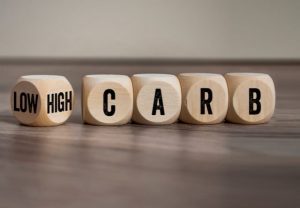Drinkable water.
Polio shots.
Nuclear fusion.
All of the above pale in comparison to the importance of the sandwich. First comes the sandwich – everything else is second place and of no importance whatsoever (though TV comes pretty close).
I have always loved sandwiches. I grew up on Jewish deli, moved to grinders when I went to college in New Hampshire, fell in love with paninis in Chicago and am now a devoted fan of the Vietnamese sandwich. The sandwich has been with me for as long as I can remember.
And although a sandwich might be made improperly – and that sandwich maker should be taken outside and shot in the kneecaps – a sandwich is never a bad idea. It’s always a great time for a sandwich. Lunch – check. Dinner – double check. Snack – triple decker check. Breakfast – triple decker with French fries on top check.
When you’re young, sandwich making is really your first experience at being a chef. As a kid, the first time I made a sandwich it was simply prepared, using simple, rustic ingredients in a really unique way: it was a potato chip sandwich. I took a slice of wheat bread, arranged some Lay Potato Chips on it and placed another slice of wheat bread on the chips. Boom. A sandwich was created. A few years later I branched out into more sophisticated sandwich making and created the peanut butter, mayonnaise and lettuce sandwich. Let’s just say it was underappreciated and people didn’t understand the genius of it.
Now, the perfect sandwich has three crucial components:
Component One: Bread. It’s the fresh bread that makes it. Nothing, repeat, nothing will kill a sandwich quicker than stale, old bread. You can have the freshest veggies, the most expensive cheeses and the most perfectly cured meats, but if the bread ain’t fresh it ain’t worth eating. You can use any type of bread you want (though if you enjoy eating Wonder Bread please stop reading and punch yourself in your face), just make sure the bread is fresh.
Component Two: Veggies. You gotta have them. First of all, they’re good for you. Secondly, it adds texture to your sandwich. It adds crunch. No veggies equals a soft sandwich and unless you are without teeth you shouldn’t be eating a soft sandwich at your age. So add some lettuce, add some cucumber, hell, at some pickled carrots! Your taste buds and your colon will thank you.
Component Three: Spreads. Okay, here’s where the controversy starts, so go ahead and put your argument pants on. Spreads are good on a sandwich. The trick is picking the right spread for the right sandwich. You may love your pesto spread but that doesn’t mean it belongs with black forest ham. And please, for the sake of humanity, please don’t add a cheese spread to a sandwich that already has cheese. Think of adding a spread to a sandwich like a wine pairing or choosing the right belt with your shoes, only more important because we are dealing with the sandwich. You can live with brown shoes and a black belt or a Riesling with a lamb ragu – you can’t live with a hummus spread on a buffalo mozzarella sandwich. You just can’t.
When you think about it, the sandwich is the perfect meal. You got your meat, your veg, and your grain. It can be uber-healthy or artery clogging. You can eat it at anytime of the day and you can take it with you anywhere. Maybe we shouldn’t treat the sandwich with such casualness. Maybe it needs to be more revered. So the next time you are making a sandwich, stop what you’re doing, go to your desk and pen a little thank you note to the sandwich.
And please don’t refer to them as “sammies.” You’re better than that.
















-300x169.jpg)









